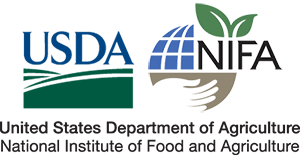Adapting for Resiliency
Change is inevitable. Communities, to be resilient, need to be able to respond to change as it unfolds. Responses may include long term adaptation to change, those that requires communities to modify how they use and manage their resources, operations, and assets in the future. Furthermore, decision makers and policy makers need to also be able to see what possible ripple effects might be created if they choose one adaptation action over another, and how it may impact others in the community and elsewhere.
Planning for adaptation is especially critical for communities that are extensively dependent on natural resources (e.g., water, energy, and land) for their survival and socio-economic activities. For many of these communities with sizable and productive food, energy, and water sectors, natural as well as anthropogenic changes can significantly stress and deteriorate natural resources that these communities require. Multiple short term and long term impacts may occur due to one or more than one type of change (also, called perturbations and disturbances), such as climate change, natural hazards, environmental disasters, population growth, political crisis, policy changes, and market changes, etc. Communities concerned about these impacts must consider and coordinate potential adaptation strategies as part of their long-term plans for resiliency.
InterACTWEL (Interactive Adaptation and Collaboration Tool for managing Water, Energy and Land) is a secure and intelligent computer-aided decision support tool that is being developed by researchers at Oregon State University and Indiana University- Purdue University Indianapolis to aid adaptation planning in local communities. The aim of this decision support tool is to empower food, energy, and water sectors in communities to collaborate and coordinate their planning efforts in the face of an uncertain future. This highly flexible and navigable tool uses advanced scientific models and interactive interfaces to assist sectors in developing potential community-wide adaptation actions in response to specific disturbances. Community actions include strategies for modifying demand, allocation, storage, and distribution of water, energy, and land resources over time (also, called adaptation pathways). The intuitive graphical user interfaces can assist decision makers and policy makers to (a) customize InterACTWEL for their own community, (b) visualize costs, benefits, and impacts of their actions, and (c) communicate suggestions for and feasibility of potential actions to partners.
Find Out More
Who can use InterACTWEL
InterACTWEL is designed to assist communities whose socio-economic activities involve food sectors, energy sectors, and water sectors for consumptive and non- consumptive uses. Hence, end users of the tool include a wide range of stakeholders, such as policy makers, government agencies, municipalities, growers, tribes, water managers, dam operators, industries, recreationalists, and environmentalists.
How can communities use InterACTWEL
Communities can create their own InterACTWEL projects by signing up here. InterACTWEL allows community leaders, citizens, and government agencies to set up their project data and models, and then use them to understand the potential impacts of multiple persistent and sudden threats to their water, energy and land resources before they happen. InterACTWEL also generates recommendations on a “menu” of response actions. This “menu” of actions evaluated for a wide range of cascading economic, environmental, cultural, and social impacts will empower communities to develop a “reservoir” of strategies for adapting to threats, as well as communicate potential plans to policymakers and other community members.
Acknowledgement and Disclaimer: This material is based upon work funded (award ID 2017-67003-26057) by the INFEWS program, which is supported via a collaboration between United States Department of Agriculture and National Science Foundation. Any opinions, findings, and conclusions or recommendations expressed in this material are those of the author(s) and do not necessarily reflect the views of the funding agencies.






